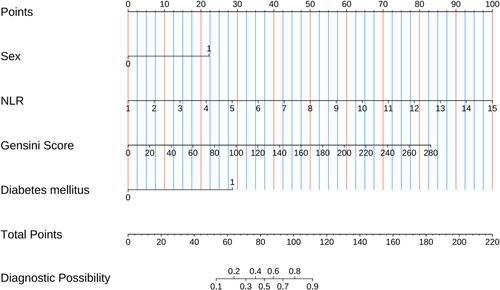Incorporating Inflammation Biomarker-Driven Multivariate Predictive Model for Coronary Microcirculatory Dysfunction in Acute Myocardial Infarction Following Emergency Percutaneous Coronary Intervention
Abstract
Background
Despite patients with successful revascularization as evidenced by angiographic findings, inadequate clinical management of coronary microcirculatory dysfunction (CMD) may result in preventable adverse outcomes. Therefore, it is imperative to use a multimodal data‑driven predictive model for the occurrence of CMD in patients with acute myocardial infarction (AMI) following emergency percutaneous coronary intervention (PCI).
Methods
A prospective case−control analysis was conducted on a cohort of 77 patients with AMI who underwent PCI. The most informative predictors were selected for the predictive model through the application of LASSO analysis and multi-factor logistic regression. The diagnosis of CMD is based on findings from cardiac magnetic resonance (CMR).
Results
Based on the findings from LASSO analysis and multi-factor logistic regression, variables including sex, neutrophil-to-lymphocyte ratio (NLR), Gensini score, and diabetes mellitus were identified as independent predictors for the development of CMD in AMI patients who underwent emergency PCI. The predictive model was evaluated using bootstrap self-sampling 500 times. The resulting predictive model demonstrated an AUC value of 0.897 (95% CI: 0.827−0.958). The calibration curves exhibited good concordance between the predictions generated by the model and the CMR analysis. Furthermore, decision curve analysis revealed that the predictive model provided valuable clinical benefit in predicting CMD.
Conclusions
The multivariate predictive model, constructed using readily available clinical variables in patients with AMI who underwent PCI, demonstrates satisfactory predictability for identifying comorbid CMD, thereby facilitating the identification of high-risk patients.


 求助内容:
求助内容: 应助结果提醒方式:
应助结果提醒方式:


